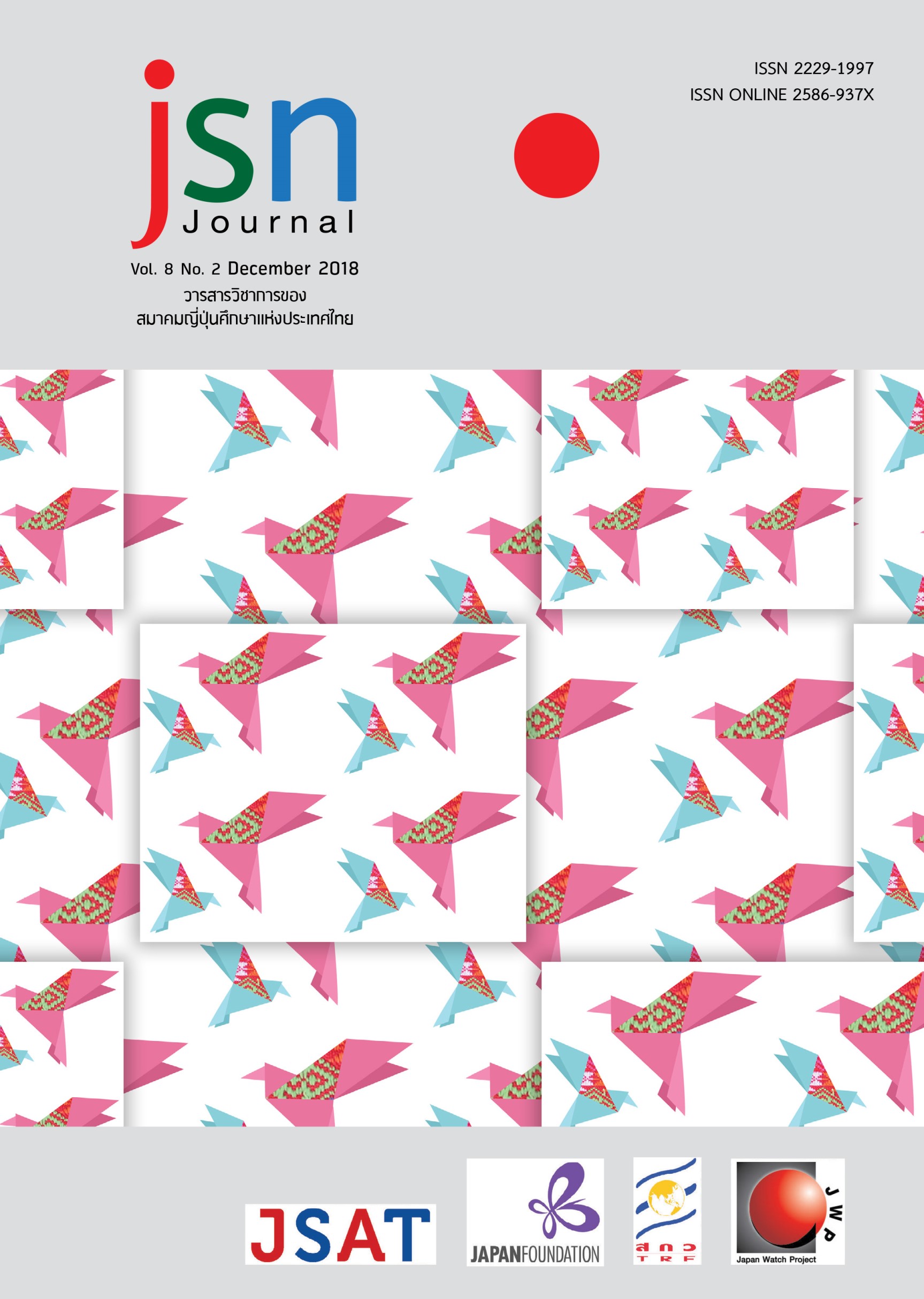The Effect of Gender Equality Laws on the Presentation of Women’s Images in Contemporary Japanese Drama
Main Article Content
Abstract
This research studies a relationship between the enforcement of gender equality laws and the images of women’s character reflected in contemporary Japanese drama by using the enforcement of the Equal Employment Opportunity Law (EEOL), 1985 and the Basic Law for a Gender-Equal Society (BLGES), 1999 as the time frame. Researchers used ideas about changing women’s roles in Japan and the relationship between mass communication and society to guide the study. 300 high-rating Japanese trendy dramas from 1977 to 2016 has been collected and analyzed. The study distinguished 5 subjects for analysis: the protagonist’s gender, the women’s character role, the level or position of the women’s characters that were working, the character of the women’s marital status, and the personality of the women characters. This study found that the enforcement of EEOL and BLGES influences the image of Japanese women represented in Japanese drama. Since the enforcement of the laws, Japanese women have been reflected in dramas more as working women with more power in society. In addition, the women’s characters have been presented as being able to rely more on themselves, having their own opinions, and having more leadership than previous images. However, even though there are more working women represented in Japanese dramas nowadays, there are still some inequality reflected, especially regarding the position and roles of women in workplace since not many of them are in high-ranking positions.
Article Details
ข้อความและข้อคิดเห็นต่างๆ ในบทความเป็นของผู้เขียนบทความนั้นๆ ไม่ใช่ความเห็นของกองบรรณาธิการหรือของวารสาร jsn Journal
References
กาญจนา แก้วเทพ. (1992). ภาพลักษณ์ของผู้หญิงในสื่อมวลชน. กรุงเทพฯ: โครงการเผยแพร่ผลงานฝ่ายวิจัย จุฬาลงกรณ์มหาวิทยาลัย.
ฉัตรรวี คูหาวิชานันท์. (2009). ค่านิยมในละครญี่ปุ่นสมัยใหม่ที่นำเสนอผ่านทางโทรทัศน์. (วิทยานิพนธ์ปริญญามหาบัณฑิต). กรุงเทพฯ : จุฬาลงกรณ์มหาวิทยาลัย.
ชนิดา ตั้งถาวรสิริกุล. (1998). ผู้หญิงญี่ปุ่น : เพศและอำนาจ. ญี่ปุ่นศึกษา (Japanese Studies), 23-35.
ชุติมา ธนูธรรมทัศน์. (2003). วัฒนธรรมญี่ปุ่นในการ์ตูน. (วิทยานิพนธ์ปริญญามหาบัณฑิต). มหาวิทยาลัยธรรมศาสตร์, กรุงเทพฯ.
บารนี บุญทรง. (2004). บทบาทหน้าที่ของผู้หญิงทำงานในสังคมญี่ปุ่นตั้งแต่หลังสงครามโลกครั้งที่สอง. วารสารศิลปศาสตร์ คณะศิลปศาสตร์ มหาวิทยาลัยธรรมศาสตร์, 4(2), 41-63.
บุญยง ชื่นสุวิมล. (1995). โครงสร้างสังคมญี่ปุ่น. เชียงใหม่: มูลนิธิโครงการตำราสังคมศาสตร์และมนุษยศาสตร์.
ปิยวรรณ อัศวราชันย์. (2016). กฎหมายว่าด้วยโอกาสการจ้างงานที่เท่าเทียมกันของผู้หญิงญี่ปุ่น : 3 ทศวรรษแห่งการเปลี่ยนแปลง. วารสารเครือข่ายญี่ปุ่นศึกษา (JSN Journal), 6(2), 34-52.
ยุทธศาสตร์การฟื้นฟูประเทศญี่ปุ่น (ฉบับแก้ไข) (มิถุนายน 2014) เรื่องความท้าทายต่อไปในอนาคต (未来へ の挑戦), สำนักนายกรัฐมนตรีญี่ปุ่น. ค้นจาก https://www.kantei.go.jp/jp/singi/keizaisaisei/pdf/honbun2JP.pdf
วราภรณ์ ศรีกาญจนเพริศ. (2001). การถ่ายทอดความหมายความฉลาดทางอารมณ์ในละครโทรทัศน์หลังข่าว. (วิทยานิพนธ์ปริญญามหาบัณฑิต). กรุงเทพฯ : จุฬาลงกรณ์มหาวิทยาลัย.
อภิรัตน์ รัทยานนท์. (2004). กระบวนการสร้างความเป็นจริงทางสังคมของตัวละครนางร้ายในละครโทรทัศน์. (วิทยานิพนธ์ปริญญามหาบัณฑิต). กรุงเทพฯ : มหาวิทยาลัยธรรมศาสตร์.
อารดี อภิวงศ์งาม. (1999). ความแตกต่างระหว่างค่านิยมของคนไทยและคนญี่ปุ่น : เข้าใจญี่ปุ่น. เชียงใหม่: ลานนาการพิมพ์.
เอกสารประกอบการประชุมการปรับโครงสร้างภาษี ครั้งที่ 18 (กันยายน 2015) เรื่องการเปลี่ยนแปลงโครงสร้างสังคมเศรษฐกิจ: การเปลี่ยนแปลงวิธีการทำงาน, กระทรวงการคลังญี่ปุ่น. ค้นจาก http://www.cao.go.jp/zei-cho/gijiroku/zeicho/2015/__icsFiles/afieldfile/2015/11/17/27zen18kai2.pdf


